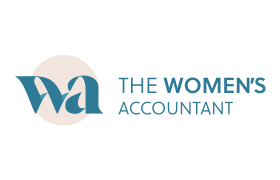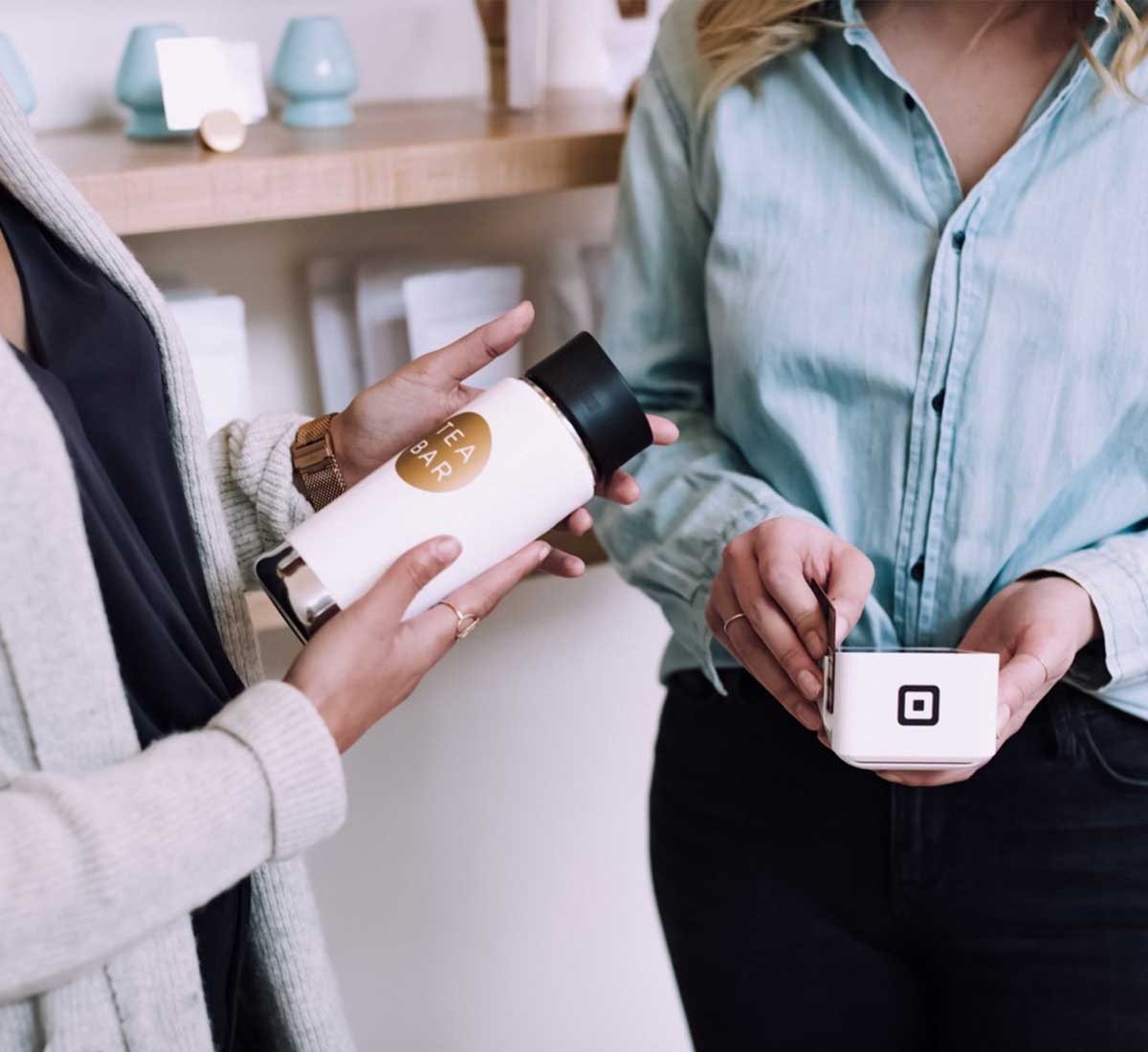Afterpay – Buy Now, Bleed Later?
Should You Use
‘Buy Now, Pay Later’
Services For Your Business?

Emma Bowdler
I’m a cheerleader for women and an accountant bursting with personality.
If you’re sitting there having 90s flashbacks and wondering whether the explosion of ‘buy now, pay later’ sites are just a modern-day layby, you’re not alone. It’s true that we live in an era of instant gratification and constant notifications, and it can often feel like it’s just one ping after another when you’re trying to run a business.
From a customer perspective, there are seemingly endless choices when it comes to buying products and services. Having options is great, and these ‘buy now, pay later’ options are certainly convenient and accessible, giving many of us new possibilities and opportunities to participate in the eCommerce revolution. Putting to one side that they can also be ‘all too convenient debt traps’ for customers, what do they mean for businesses as we try to desperately keep pace with customer demand and modern technology?
The Rise of the ‘Buy Now, Pay Later’
First, we should probably explain what a so-called ‘buy now, pay later’ service actually is. Buy now, pay later or ‘BNPL’ arrangements allow shoppers to purchase goods and services and then pay off the purchase price over a specified period of time. So, yes, they are effectively a modern-day version of layby, but with a few twists:
- You don’t pay interest on the purchase. Instead, BNPL providers make their money through either charging retailers to use the platform, or by charging monthly, setup or ‘late’ fees to customers (e.g. Afterpay).
- You get the item straight away, rather than having to wait until it’s paid off first.
- Instalments or payments are made to the BNPL provider, not the store you purchased from – so businesses get paid in full and don’t take on as much of the risk.
Sounds pretty great, but things aren’t always as they seem.
In Australia, the BNPL industry is regulated by The Australian Securities and Investments Commission (ASIC) and it has almost doubled in the 12 months according to ASIC’s latest reports. There are currently 10 providers in Australia with new players on the scene all the time, which means that, when you’re running a business, it can be hard to keep up.
So, we’ve put together a list of things to keep in mind when considering whether or not to use a BNPL for your business.
1. Buy Now Pay Later Is Predominately Used By Millennials And Gen-Z
We’ve spoken before about how important it is for business owners to know their audience. Beyond tailoring your offering and content to their needs, it will help you make decisions like; whether or not to use a BNPL provider.
Knowing who is predominantly using BNPL services is a great place to start with your decision-making! Similarly, if you’ve already jumped into partnership with a BNPL provider, you might want to know who their key demographic is so that you can take advantage of it.
Given that ‘buy now, pay later’ services are relatively new (or at least layby revamped), it is probably no surprise to find out that Millennials and Gen-Z represent the largest proportion of customer users. In fact, as of 2021 in Australia, 18-35 year-olds made up 62% of customer users. Why? Not only is this segment generally more tech-savvy and comfortable with online shopping and eCommerce than other generations, they also tend to be more averse to debt than older age groups. Data from the ASIC says that two in five people who buy through BNPL schemes are low-income earners and, of those, two in five are students or part-time workers.
And it’s not all designer shoes either. According to Mozo’s 2021 Buy Now Pay Later Report, 65% of BNPL users are buying bigger ticket items like fridges, heaters or new beds, and trying to avoid the interest charges and debt associated with buying these items using traditional credit cards. This is followed by ‘luxury items’ (57%) like clothing, jewellery and car accessories, and essential items (28%) like food.
This is to say that, if your target audience sits squarely within the Millennial and Gen-Z demographic, you are likely missing out on a significant business growth opportunity by not offering BNPL options. If your audience is older, it might not be as critical to your ongoing sustainability and longevity at this stage.
2. BNPL Services Help Generate Their Own Leads
We know when you’re busy wearing all the hats in your business that popping on your marketing one can feel daunting. However, this should be music to your ears. According to Mozo’s Buy Now, Pay Later report, Aussies are making BNPL purchases in four different ways:
- 16% in a physical store
- 42% online
- 37% browsing BNPL app or website
- 5% social media
What this means is that BNPL providers have their own followings and audiences that have the potential to drive traffic and potential leads to our businesses. This might be jargon overload but – McKinsey & Company recently found that, thanks to COVID and the online shopping boom, there has been an increasing trend towards using digitisation and point of sale (POS) financing options (like BNPL options) to drive customer engagement. In fact, BNPL is becoming a key part of eCommerce business and marketing strategies.
Basically, if you run an eCommerce business or rely on traffic to your site to generate leads for your products or services, there might be a significant competitive advantage of offering customers/clients BNPL options. If, however, you have a steady flow of leads, your target audience doesn’t use BNPL, or finding new, online sources is not a priority for you right now – you can probably afford to put BNPL on the BBFN (backburner for now 😉).
3. Converting Browsers To Buyers Might Be Easier With BNPL Options
If you’ve been in business long enough, you’re probably familiar with conversion – the rate at which you’re ‘converting’ or turning window shoppers into confident buyers.
Depending on your business, and your target market, ‘buy now, pay later’ options may present a real opportunity to make your business more accessible and more appealing to more customers. Not only do 52% of users admit to spending more using BNPL than debit or credit cards, but 33% said BNPL is their go-to pay method. Is this an opportunity you can afford to miss out on?
Say, for example, that you run a boutique fashion outlet that predominantly targets 18–35-year-olds. Offering BNPL in a competitive market may be an advantage over others, or at least doesn’t give others a competitive advantage over you. Not only that, BNPL might be more likely to increase rates of conversion and average order value (AOV), increasing the profitability of your business.
If you run a service-based business, offering BNPL options on your offerings might make your killer copywriting services, bookkeeping prowess or plumbing ability more accessible to a broader target market. You could even pitch BNPL as a way of giving customers time to earn the money to pay for your services!
3. Converting Browsers To Buyers Might Be Easier With BNPL Options
If you’ve been in business long enough, you’re probably familiar with conversion – the rate at which you’re ‘converting’ or turning window shoppers into confident buyers.
Depending on your business, and your target market, ‘buy now, pay later’ options may present a real opportunity to make your business more accessible and more appealing to more customers. Not only do 52% of users admit to spending more using BNPL than debit or credit cards, but 33% said BNPL is their go-to pay method. Is this an opportunity you can afford to miss out on?
Say, for example, that you run a boutique fashion outlet that predominantly targets 18–35-year-olds. Offering BNPL in a competitive market may be an advantage over others, or at least doesn’t give others a competitive advantage over you. Not only that, BNPL might be more likely to increase rates of conversion and average order value (AOV), increasing the profitability of your business.
If you run a service-based business, offering BNPL options on your offerings might make your killer copywriting services, bookkeeping prowess or plumbing ability more accessible to a broader target market. You could even pitch BNPL as a way of giving customers time to earn the money to pay for your services!
4. Determine Whether The Fees Outweigh The Returns
Similar to your superannuation, banking, or the myriad of other subscription services you have in your business to create efficiencies like Xero or PayPal, we always need to balance our potential returns against the fees.
While ‘buy now. pay later’ services do make some money on the customer side of the equation (e.g. late fees!), up to 80% of their revenue is generated through merchant fees. Afterpay alone has over 43,000 active merchants to whom they charge a fixed transaction fee, plus a commission of between 3% and 7% on goods or services sold.
Also, because BNPL is essentially a form of credit, transaction fees (for sellers) are usually higher than when customers pay upfront and in full. What this means for you as retailers, merchants and service-providers is that you will need to make enough in sales to cover the fees, and more, to make it a profitable venture. Could you (or someone else!) do the maths to figure out:
- What would your profit margin be if every single one of your customers switched to using a ‘buy now, pay later’ service?
- What would happen if you went to the trouble of setting up BNPL options and no one used it?
- What would happen if 25% used the BNPL option? What about 50%?
- What would the numbers look like if offering a BNPL option increased sales by 20%?
All of this is to say: what are the numbers that would make it ‘worth it’ for your business?
5. Retailers Cannot Currently Pass On BNPL Costs To Customers
When a business accepts payment for goods or services by a debit or credit card, it usually incurs costs for processing the payment from the bank or credit provider. Some businesses include these costs in the price they charge, and others ‘pass it on’ as a payment surcharge.
This often allows businesses to offer many different payment options without incurring large losses on revenue due to fees. However, for a ‘buy now, pay later’ service to market itself as “free, if you pay on time”, they often have clauses in their contracts to prevent merchants from passing on fees to the customer. That’s right – some BNPLs like ZIP and Afterpay can explicitly prevent merchants from passing on the cost.
What we’re seeing is some big companies starting their own BNPL platforms to avoid paying merchant fees, but that’s hardly an option for a small business owner! This is just another thing to bear in mind when weighing up if this is the right option for you. And remember: there are plenty of creative ways to ‘pass on’ those costs to customers.
5. Retailers Cannot Currently Pass On BNPL Costs To Customers
When a business accepts payment for goods or services by a debit or credit card, it usually incurs costs for processing the payment from the bank or credit provider. Some businesses include these costs in the price they charge, and others ‘pass it on’ as a payment surcharge.
This often allows businesses to offer many different payment options without incurring large losses on revenue due to fees. However, for a ‘buy now, pay later’ service to market itself as “free, if you pay on time”, they often have clauses in their contracts to prevent merchants from passing on fees to the customer. That’s right – some BNPLs like ZIP and Afterpay can explicitly prevent merchants from passing on the cost.
What we’re seeing is some big companies starting their own BNPL platforms to avoid paying merchant fees, but that’s hardly an option for a small business owner! This is just another thing to bear in mind when weighing up if this is the right option for you. And remember: there are plenty of creative ways to ‘pass on’ those costs to customers.
Let’s face it, at some point, your customers and the market are probably going to demand you have some sort of BNPL services, particularly if you’re in the retail game. However, if you’re still on the fence about whether or not to add BNPL services to your business, we suggest you comb back through these five points and start with a thorough review of your pricing structures and profit margins so you can make an informed decision. And if you need a little help in that department, we’re the ones you call!
For more useful tips and tricks to get your business thriving, be sure to sign up for The Women’s Accountant Squad emails. They land once a fortnight and are jam-packed with goodness from our talented team!
Struggling For Momentum? If You’re Doing Any of These, *You* Might Be the One Holding Your Business Back
Struggling For Momentum? If You’re Doing Any of These, *You* Might Be the One Holding Your Business Back Five self-sabotaging mindsets and behaviours preventing business owners from achieving profitability, sustainability and impact (and what to do instead). Emma...
Are You Growing Broke? Why Scaling Your Business Might Be Shrinking Your Profits (and What to Do About It)
Are You Growing Broke? Why Scaling Your Business Might Be Shrinking Your Profits (and What to Do About It)The sneaky trap where revenue rises but margins disappear. Here’s how to protect your profits and your peace before you get yo’self into a financial pickle. Emma...
Stop Making These Tax Time Mistakes (and What to Do Instead)
Stop Making TheseTax Time Mistakes(and What toDo Instead) You work too hard to let tax time drain your energy (or your bank account). Avoid these common business tax mistakes before you leave more money on the table. Emma BowdlerI’m a cheerleader for women and an...








